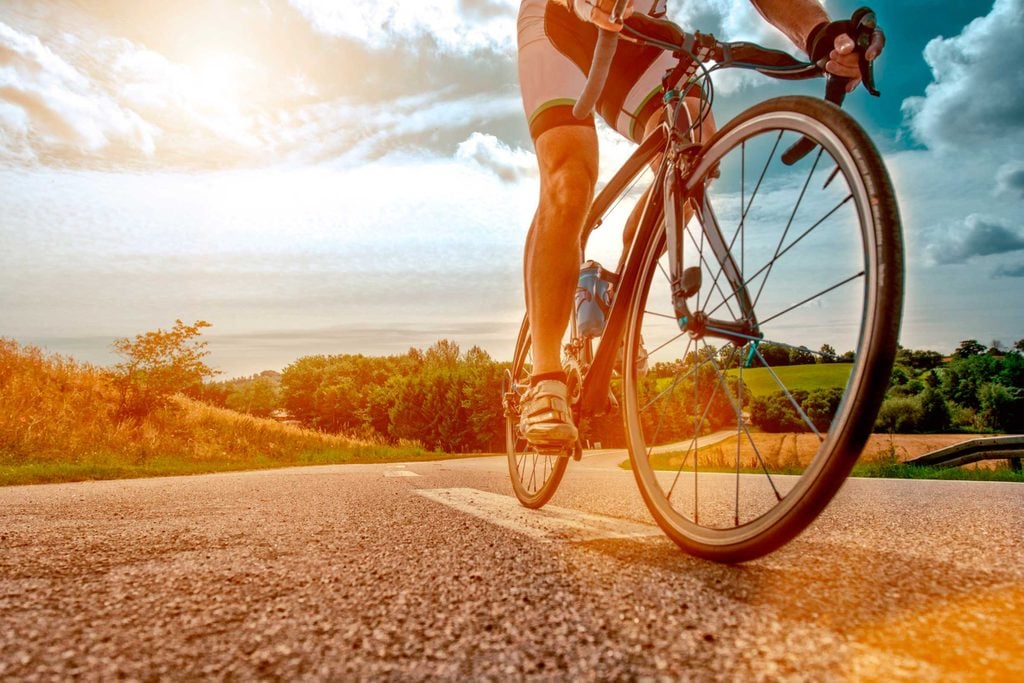The Exact Speed to Walk or Bike to Breathe in Less Air Pollution
Updated: May 05, 2021
Sure, it feels great to ride like the wind—but according to new science, slowing down a bit could protect your lungs.

Tough workouts may mean tighter abs and a stronger heart, but they also mean breathing more heavily and taking in more air. This could be a concern when you regularly walk or cycle outside on roads or areas clogged with traffic and/or smog, as research has shown that cyclists on busy city streets absorb high amounts of toxic chemicals. Air pollution can have multiple harmful effects, including exacerbating allergies and anxiety. Fortunately, if you’re an avid outdoor exerciser, new science has a trick for minimizing the damage.
As you might expect, your speed corresponds to the amount of air you gulp as you train, and according to a September 2016 study published in the International Journal of Sustainable Transportation, there’s a sweet spot that allows you to achieve maximum heart benefits without sacrificing your lungs.
Using a U.S. Census-based computer model of 10,000 people, researchers from the University of British Columbia calculated ideal travel speeds for different age groups and sexes, called minimum-dose speeds (MDS). According to the research, led by Alex Bigazzi, a transportation expert from the university’s Department of Civil Engineering, female bike enthusiasts should cycle at speeds between 13 and 20 kilometers per hour (that’s about 8 to 12 miles per hour), and male cyclists should aim for 15 to 20 kilometers per hour (about 9 to 12 miles per hour) on flat and city roads. Walkers should move at around 4 kilometers per hour (about 2.5 miles per hour), to minimize their inhalation of air pollution while still getting the health perks of exercise, like these 15 benefits of walking.
“If you move at much faster speeds than the MDS—say, cycling around 10 kilometers, or about 6 miles per hour, faster than the optimal range, your inhalation of air pollution is significantly higher,” Dr. Bigazzi told Science Daily. “The good news is the MDS numbers align pretty closely with how fast most people actually travel.”
Especially if you have asthma or severe allergies, it’s a good idea to also consult the air quality forecast in your area before lacing up your sneakers for an outdoor workout. Go to AirNow.gov or download the free Air Now app, which provides air quality forecasts for nearly 400 U.S. cities. If bad air quality is coming your way, head out in the morning, when ozone levels tend to be lower (levels rise throughout the day in response to sunlight), according to Alison Davis, senior advisor in the EPA’s Office of Air Quality Planning and Standards.
Just don’t let a little smog cancel your workout entirely. You’d be surprised at the number of calories you can burn biking.